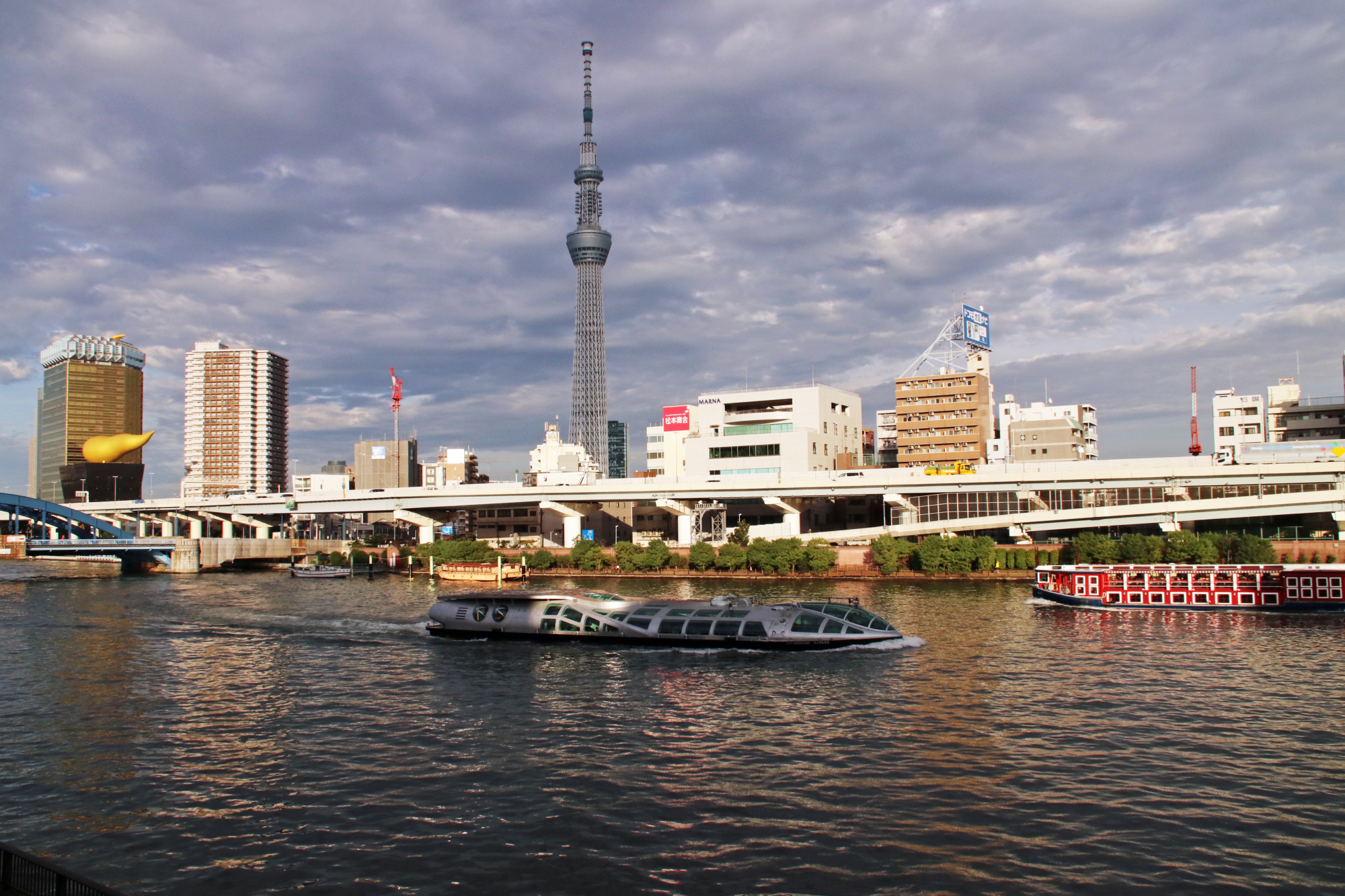The shadowy backstreet that parallels the west bank of the Sumida River, between the Umaya and Komagata bridges, has always struck me as woefully underrealized.
Two venerable dining establishments — the freshwater loach specialists at Komakata Dozeu and the grilled eel experts at Maekawa — have for centuries denoted the area's aquatic proximity, but a smattering of new guesthouses and hotels appearing in the Komagata district suggests an area in transition.
I exit the Oedo Line at Kuramae Station, and am welcomed with buckets of autumn rain. Splashing northward, the wind playing my umbrella like a pinwheel, I try to snap a few shots of the 1929 pea-green Umaya Bridge. "Umaya" means "horse stable," a nearby sign informs me, and the bridge was supposedly named for barns housing the steeds of the Tokugawa shoguns during the Edo Period (1603-1868). Decorated with horse-related motifs, the Umaya's three through arches bound over the rain-pelted Sumida in a simple, but discernible, art deco style.

















With your current subscription plan you can comment on stories. However, before writing your first comment, please create a display name in the Profile section of your subscriber account page.